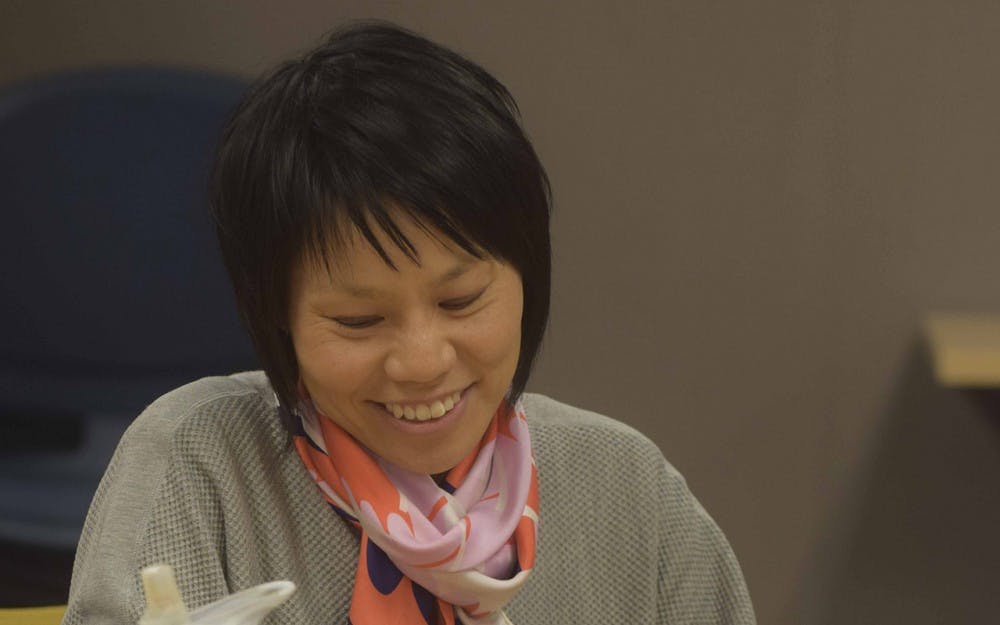Attendees gathered around a table with bright yellow novels titled “American Born Chinese” in hand. From the cover of the novel, a Chinese-American boy stares out while clutching an orange Transformer toy.
The graphic novel by Gene Yang was the focal point of a discussion on Chinese-American identity that took place Tuesday in the Monroe County Public Library.
The discussion took place in anticipation of the author’s upcoming talk Feb. 23 in the Buskirk-Chumley Theater. The talk will be part of IU’s ongoing “China Remixed” Arts and Humanities Festival.
Vivian Halloran, IU English and American studies professor, said a main focus of the novel was its main character’s struggle to integrate his Chinese and American identities. The Transformer featured on the cover of the novel is symbolic of this struggle, she said.
“The Transformer toy really does reflect him transforming between two identities as he figures out where he falls between Chinese and American,” Halloran said.
When a friend sent her the novel, Ellen Wu, director of the Asian American Studies program at IU, said she was surprised to see a story that emphasized this Chinese-American narrative.
“Growing up when I did into 1980s, I didn’t really have exposure to arts and culture that reflected people like me,” Wu said.
Wu said the character’s Asian identity was not the only reason she connected with him. It was also his struggle to understand himself as a Chinese-American.
“I can really recognize that feeling like stranger in your own skin, that not knowing exactly where you fall and how you belong,” Wu said. “I think that’s a universal struggle for any Asian-American.”
Halloran said this identity struggle is common when parents encourage children to maintain culture and traditions while their environment pushes them to assimilate.
“There’s a clash in cultures that overlays generational divides,” Halloran said. “As they grow up, they’re often pulled in two ways. On one hand, they have people telling them that they aren’t Chinese enough while, on the other hand, they want to fit in.”
Halloran said not only did the message of the novel make it interesting but also the methods the author used. She said the use of cartoons to tell the story was a purposeful and effective approach.
“The cartoons in the graphic novel are not just an art form,” Halloran said. “It tells a story and teaches students just as a movie or video or just written text might. It engages the reader in a new way.”
She said one aspect that makes cartoons stand out among other mediums is its visual permanence. Readers can take in the book at their own leisure, choosing a pace that is appropriate for their reading style.
As a result Yang was able to cement the role of cartoons in art and education because of this graphic novel, Halloran said.
“It really validated graphic novels and their potential as an educational tool,” Halloran said. “This book continues to be discussed in so many classrooms. So many are learning about life and culture and understanding from this book and through cartoons.”






